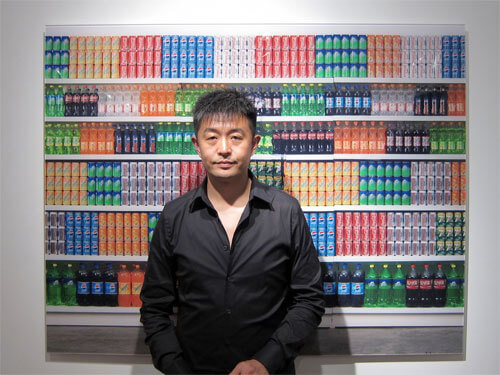Liu Bolin is an artist born in China’s Shandong province in 1973, and he earned his Bachelor of Fine Arts from the Shandong College of Arts in 1995 and his Master of Fine Arts from the Central Academy of Fine Arts in Beijing in 2001. His work has been exhibited in museums around the world. Also known as "The Invisible Man", Liu Bolin's most popular works are from his "Hiding in the City" series; photographic works that began as performance art in 2005. Liu belongs to the generation that came of age in the early 1990s, when China emerged from the rubble of the Cultural Revolution and was beginning to enjoy rapid economic growth and relative political stability. Since his first solo shows in Beijing in 1998, Liu Bolin’s work has received international recognition.
Among other international venues, his distinctive photographs and sculptures have been shown at the major contemporary photography festival Les Rencontres d'Arles and he had solo shows at Dashanzi Art Zone in Beijing (2007), Galerie Bertin-Toublanc in Paris (2007), Eli Klein Fine Art in New York (2008), Galerie Paris-Beijing in Paris and Brussels (2013), Boxart Gallery in Verona (2008), Forma Foundation for Photography in Milan (2010). To celebrate US President Obama's visit to China, he made an effigy of Obama in his honor. He now lives and works in Beijing, China.
Source: Wikipedia
Born in 1973 in the northern province of Shandong, Liu Bolin trained at the prestigious Central Academy of Fine Arts, a student of the renowned artist Sui Jianguo, who mentored him at the beginning of his career. Liu belongs to the generation that came of age in the early 1990s, when China emerged from the rubble of the Cultural Revolution and was beginning to enjoy rapid economic growth and relative political stability. Liu Bolin is best known for his series of performance photography Hiding in the City. Since his first solo shows in Beijing in 1998, Liu Bolin’s work has received international recognition. Among other international venues, his distinctive photographs and sculptures have been shown at the major contemporary photography festival Les Recontres d'Arles and he had solo shows at Dashanzi Art Zone in Beijing (2007), Galerie Bertin-Toublanc in Paris (2007), Eli Klein Fine Art in New York (2008), Boxart Gallery in Verona (2008/2010). He now lives and works in Beijing.
Source: Box Art Gallery
Better known as The Invisible Man in media circles. He discusses the social concerns of his home country through his artistic practice, most prominently through his ‘camouflage’ installations. Traversing mediums such as performance, photography, Liu Bolin dissects the tense relationship between the individual and society by ‘disappearing’ into environments which are sites of contention and criticism.
His “Hiding in the City” series has been displayed in numerous museums and institutions across the globe. Inspired by his powerful visual messages, artists and institutions and organizations such The Louvre (Paris, France), Harper’s Bazaar Magazine, JR, Carlos Cruz-Diez, Jon Bon Jovi and Kenny Scharf have invited Liu Bolin to collaborate on creative projects.
Source: Liu Bolin Studio
